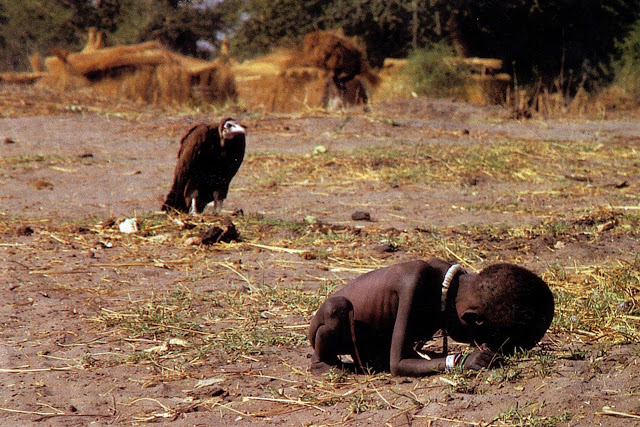The controversy between whether or not these photographers should be taken is an ongoing argument, but in my opinion, generally I think these photographers have a deeper meaning and are taken to exploit a problem so that change can occur rather than just take a good picture. Even though the photographs are upsetting, I think the sympathy for the child has made the public want to help more. Photographers who take photographs for the news to exploit an issue, do it not in a malicious way but they do it with sheer courage to show people that this is really happening and it needs to be stopped. It is more a reality check, why shouldn’t they take photos? It is what is happening in the world, are the public embarrassed to show the rest of the world that its happening in their country? There is positive and negative documentary photography and just because the pictures can be shocking to look at, its not like the photographer can manipulate what is really happening. In a world leaded by the media information, it is essential that society can be put into a position to trust the media; to believe that what its been shown and told corresponds to reality, so that a reaction against such reality could be properly achieved.
An example of controversy photograph is this picture above. In March 1993 Kevin Carter made a trip to Sudan. Near the village of Ayod, Carter found a girl who had stopped to rest while struggling to a United Nations feeding centre, where a vulture had landed nearby. He waited for twenty minutes until the vulture was close enough, positioned himself for the best possible image and only then chased the vulture away. At this point Carter was probably not yet aware that he had shot one of the most –or even the most- controversial photographs in the history of photojournalism.
The photograph was sold to The New York Times where it appeared for the first time on March 26, 1993. Practically overnight hundreds of people contacted the newspaper to ask whether the child had survived, leading the newspaper to run a special editor’s note saying the girl had enough strength to walk away from the vulture, but that her ultimate fate was unknown. On April 2, 1994 Nancy Buirski, a foreign New York Times picture editor, phoned Carter to inform him he had been awarded with the most coveted prize for photojournalism; the Pulitzer Prize for Feature Photography.


To improve this post you need to follow my instructions blog post, Standards and Ethics, read article and try and answer questions etc.